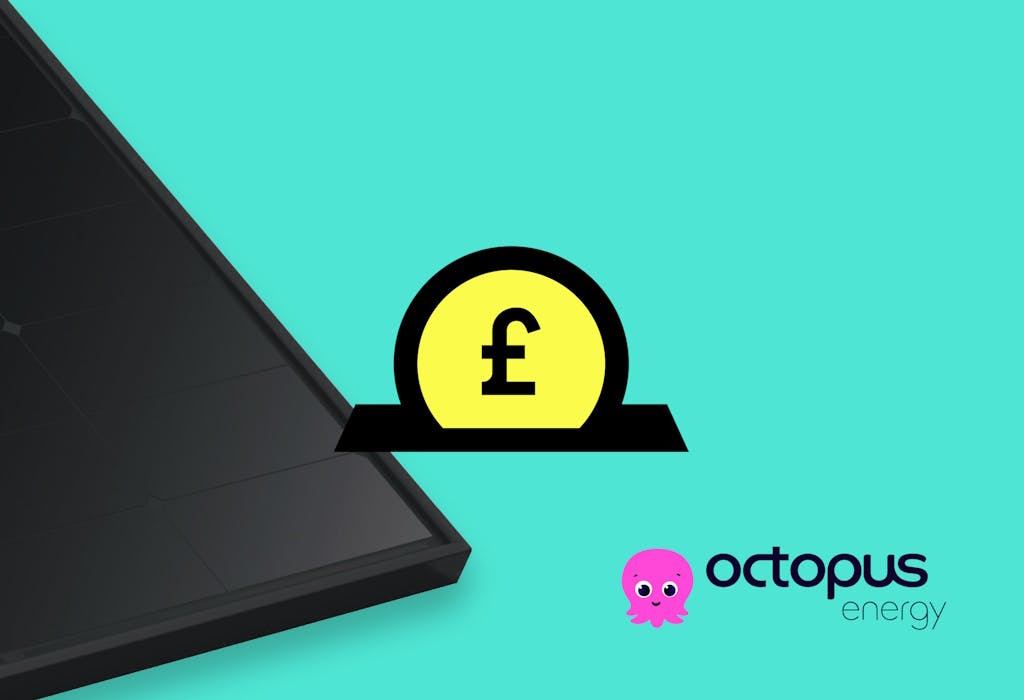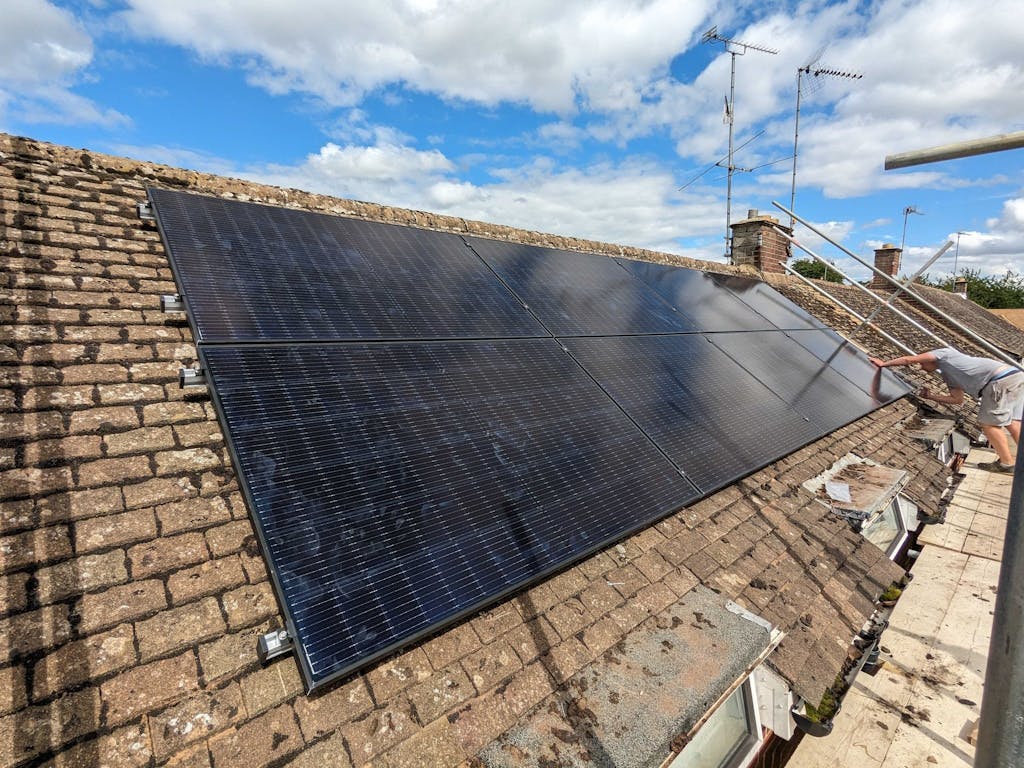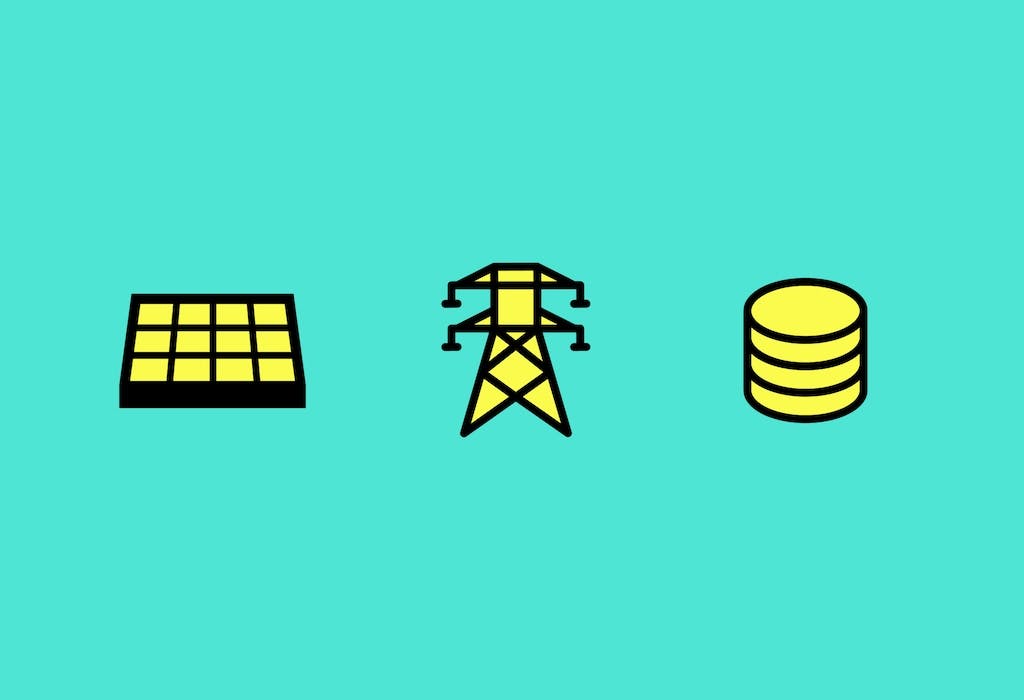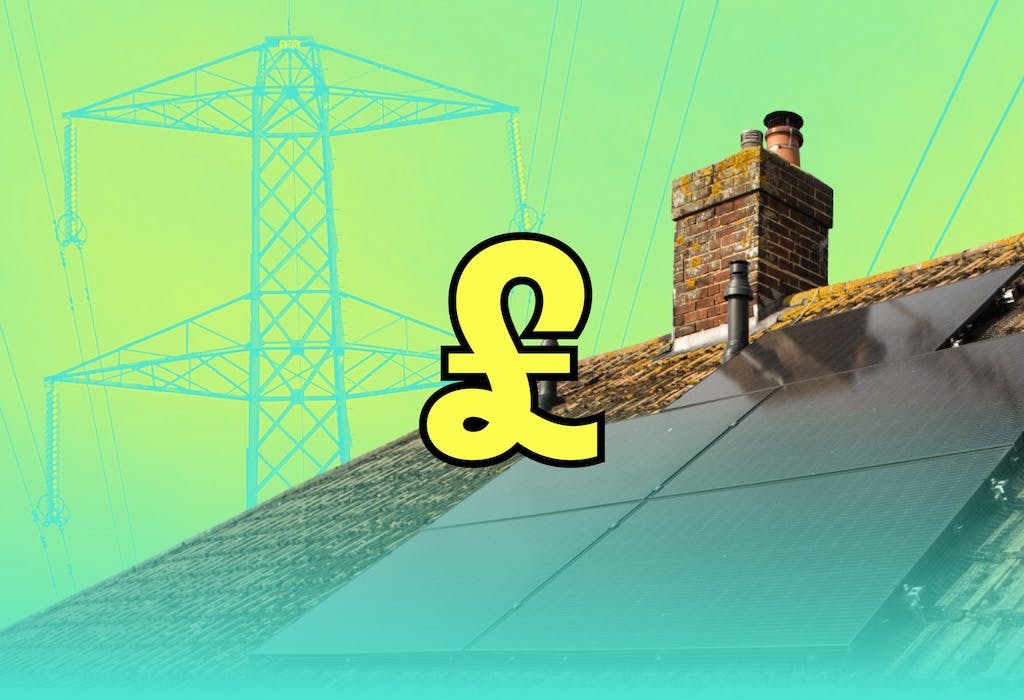- Solar advice hub
- Exporting-to-the-grid
- Intelligent Octopus Flux: explained
Intelligent Octopus Flux: explained
Here's how Intelligent Octopus Flux works with your solar installation, how much it can earn you, and when it’s the best choice for your home.


Why you can trust our content
We know that the solar industry is full of misinformation, but we only use reliable sources, including:
- Our experienced solar experts, installers and system designers
- Our own database of solar & battery system designs
- Authoritative bodies like MCS and the UK government




At a glance
Solar export tariffs can save you hundreds of pounds per year by paying for the excess solar electricity you send to the grid – but Intelligent Octopus Flux isn’t just another export tariff.
As well as paying the highest export rates in the country, it also allows you to lower your import costs, all while helping the grid to withstand peak periods of consumption across the country.
In this guide, we’ll explain how Intelligent Octopus Flux works with your solar & battery system, how much it can earn you, and whether it’s the best tariff for your home.
If you’re interested in how much you could save with a solar & battery system, click the button below, enter a few details, and we’ll generate an estimate.
What is Intelligent Octopus Flux?
Intelligent Octopus Flux is a smart import and export tariff with peak and off-peak periods that’s available to households with solar panels and an eligible battery.
Its import and export rates are higher during the 4pm-7pm peak time than they are at any other point, but they always stay level with each other.
This means you can charge your battery at cheaper times – when electricity is 10% cheaper than on Octopus’s standard variable tariff – then sell to the grid during the peak period.
Instead of simply viewing your battery as a storage unit for your excess solar electricity, Intelligent Octopus Flux uses it to maximise your income.
This tariff also removes the basic inequality at the heart of most solar export tariffs (i.e. that you’ll pay more to buy electricity than you’ll receive for selling it) and encourages people to shift their energy usage away from peak times, when the grid is under the most pressure.
Intelligent Octopus Flux: the key details
Intelligent Octopus Flux came on the market in July 2023, and changes its rates every three months to reflect Ofgem's new price cap.
It allows you to sell electricity to the grid for an above-market rate, but you can only sign up to the tariff if you have one of a limited number of qualifying batteries.
| Details | |
|---|---|
| Provider | Octopus Energy |
| Tariff name | Intelligent Octopus Flux |
| Tariff type | Variable |
| Tariff change frequency | Every three months |
| Average savings vs normal tariff | £763 per year* |
| Requirements | • Receive grid electricity from Octopus • Own solar panels & an eligible battery • Own an Apple or Android smartphone or tablet |
| Exit fee? | No |
How does Intelligent Octopus Flux work?
Octopus will run your battery for you, making sure it fully charges at off-peak times, and discharges all of it to the grid and your home during the 4pm-7pm peak period.
The company relies on smart battery controls that use weather forecasts to calculate how much electricity your solar panels are likely to produce each day, and how much of it your home should use to save the most money.
Your battery will then source the remainder from the grid, to get your battery fully charged by the time 4pm comes around.
This means you’ll always buy low and sell high, no matter how much electricity your panels generate.

Octopus is currently the only energy provider that offers export tariffs with peak and off-peak rates.
Instead, you’ll simply sell your excess solar electricity to the grid, always for the same price, and only when your panels generate so much energy that your battery reaches its capacity.
With Intelligent Octopus Flux, you can be paid for contributing solar electricity to the grid, and for having a battery.
If you'd like to sign up for Intelligent Octopus Flux, click the button below.
Verified expertIntelligent Octopus Flux is pretty groundbreaking stuff - it’s completely transformed the financial benefits of having solar panels and a battery, and it’s made the whole process incredibly easy for homeowners. Instead of having to program your battery yourself, you can leave the whole thing in Octopus’s hands and they’ll maximise your profits.
Alfie Ireland
Head of Operations & Technical at Sunsave
Alfie has worked in green tech for over a decade. During his four years at OVO, he helped develop the world’s largest domestic vehicle-to-grid trial.
Why did Octopus set up Intelligent Octopus Flux?
It pays to create the one of the best export tariffs, with high rates that stand out from the competition and attract more customers who’ll pay for Octopus electricity – and supply it too.
And by getting solar households to store electricity and export it during periods of high demand, Octopus can help the National Grid more easily meet the needs of its customers.
The grid often has to tell major renewable generators (like wind and solar farms) to turn off their systems because there isn’t enough storage to handle the excess. If we have more households with storage capabilities, the grid won’t need to do this as often.
This, in turn, should stop the grid from having to pay companies to turn on their gas power plants during these instances, to fill the resultant need.
In 2022, the grid paid wind farms £215 million to turn off, and spent £717 million to turn on the gas plants that briefly replaced them – a total of £932 million that households pay for through the ‘network costs’ part of their energy bills.
This amount could grow to around £2.3 billion by 2026, according to the National Grid Electricity System Operator.
Instead of buying or building storage infrastructure, Octopus puts the onus on households to buy batteries – and rewards them for doing so by maximising their income.
This is a quick, effective way for Octopus to improve the situation while also profiting. Octopus’s Alex Schoch put it well when the tariff was first launched, saying: “We’ve seen an 80% increase in demand for our smart tariffs since 2022, and everyone benefits.”

The UK's first solar subscription
- No upfront cost
- Fixed monthly fee
- 20-year Sunsave Guarantee
Intelligent Octopus Flux vs Octopus Flux
Intelligent Octopus Flux comes with smart battery controls, unlike Octopus Flux, which requires you to manually set your battery’s import and export times.
This does mean you’ll need a battery with smart controls, which limits the number of models you can use – unlike Octopus Flux.
However, these smart controls are worth it. They maximise your profits and give you access to Intelligent Octopus Flux’s high import and export rates – which Octopus Flux can't match.
All of Octopus Flux’s export rates are lower than Intelligent Octopus Flux’s, so when you do sell your excess solar electricity, you’ll make less money from it.
Octopus Flux is an excellent option for anyone who isn't able to get a compatible battery but, overall, Intelligent Octopus Flux is the better export tariff.

What rates does Intelligent Octopus Flux pay?
All rates correct as of 7 November 2024 – and they won’t change until January 2025.
At any given time on Intelligent Octopus Flux, you’ll receive the same amount for your exported electricity per kilowatt-hour (kWh) as you pay for your imported electricity – and the peak rates are always around one-third more than the off-peak rates.
However, these rates differ slightly across the country, depending on what Octopus pays for electricity in specific regions.
If you would like to see the savings you could get from a solar & battery system, just answer a few quick questions below, and we’ll provide an estimate.
How much money can you earn with Intelligent Octopus Flux?
The average household can make £763 per year from exporting electricity via Intelligent Octopus Flux.
This figure is based on a home with a 4.4 kilowatt-peak (kWp) system and a 5.2kWh battery (which are standard sizes), an annual consumption of 3,400kWh (which is the UK average), and solar irradiance of 850kWh per kWp, which exports 65% of its solar-generated electricity.
This £763 figure doesn’t even include the money this household would save from using electricity from its own solar panels, instead of the grid. Take this into account, and overall this household could reduce its annual electricity bill by £1,027.
To learn more, check out our guide to the best solar export tariffs.
How can you sign up for Intelligent Octopus Flux?
To sign up for Intelligent Octopus Flux, you first need to be signed up to an import and export tariff from Octopus.
Once you’re receiving electricity from Octopus, just get a smart meter in your home and a solar panel system that includes a compatible battery.
After that, you can start the process of getting an export tariff.
You can sign up for either Octopus Outgoing or Octopus Flux first, through the appropriate online application form.
Whichever tariff you choose, you’ll need your system’s MCS or Flexi-Orb certificate and G98 or G99 application, as well as approval from your Distribution Network Operator (DNO) – that is, the organisation that runs the hardware supplying electricity to your region.
Octopus will process your applications within about two days, then apply to your DNO for an export MPAN (Meter Point Administration Number). This unique, 13-digit code will identify your electricity meter as yours.
One to four weeks later, your DNO will provide your export MPAN, it’ll be added to your Octopus account, and all you’ll have to do is provide an initial meter reading.
Octopus will then connect to your smart meter, and you’ll start being paid for your exports – at which point you just need to download the Octopus app, where you can register your battery and switch to Intelligent Octopus Flux.
To sign up for Intelligent Octopus Flux, click the button below.
Eligibility requirements
To be eligible for Intelligent Octopus Flux, you must have solar panels and a compatible battery.
You’ll also need a smart meter, as well as a relatively recent model of iPhone or Android phone.
And as mentioned above, you must already be on an Octopus import tariff and an Octopus export tariff before you can switch to Intelligent Octopus Flux.
How long does it take?
The process of switching import suppliers usually takes three weeks at most, and the export tariff sign-up process generally takes between two and eight weeks.
So you'll usually finish the process of signing up to Intelligent Octopus Flux in five to 11 weeks, which is pretty typical for a solar export tariff.
Is Intelligent Octopus Flux worth it?
Intelligent Octopus Flux is an excellent export tariff and a great choice for many households.
It can earn you hundreds of pounds per year, and doesn't require you to get your solar panels or battery installed by Octopus – unlike many other export tariffs.
It’s among the best export tariffs if you don’t have an electric vehicle or heat pump, no matter the size of your solar panel system or level of your electricity consumption.
It's also inspired a raft of time of use tariffs like British Gas Electric Driver, which reward customers who are willing to shift their consumption and use renewable technology like a solar & battery system.
However, it's not the best choice for everyone. To learn more, check out our guide to the best solar export tariffs.
What’s the long term future of Intelligent Octopus Flux?
Intelligent Octopus Flux may rise and fall in line with energy prices, but it’s likely to stay relatively high.
In the main, suppliers have increased their solar export tariffs since the Smart Export Guarantee forced them into the market.
And Octopus in particular has a good record for raising its tariffs.
The energy provider doubled its Outgoing Fixed rate from 7.5p per kWh to 15p per kWh in 2022, then followed this up in 2023 by introducing two of the best export tariffs around: Intelligent Octopus Flux and Octopus Flux.
And it’s not the only supplier to boost its export payments. E.ON raised its top tariff from 5.5p per kWh to 16.5p per kWh in 2023, around the same time that Good Energy introduced its 15p per kWh rate.
British Gas, EDF, OVO, and Scottish Power have all raised their export tariffs too, as they’ve gradually realised how attractive a high export rate is to the discerning customer.
In the long term, regardless of whether Intelligent Octopus Flux’s rates rise, the role of export tariffs as an important part of making profits from your solar panel system will become increasingly diminished.
This is because household self-consumption will increase as electric vehicles and heating systems become commonplace across the country – meaning homes will use more of their solar electricity, instead of exporting it to the grid.
Next steps
Intelligent Octopus Flux is one of the best export tariffs for most solar households in the UK.
This is due to the supplier’s radical decision to offer the same rates for imported and exported electricity, but only to systems that include a battery with smart controls.
With this tariff, your battery isn’t just a storage device; it’s a way for you to make extra money while also helping the grid to cope in a rapidly electrifying country – and all without you having to lift a finger.
If you’re wondering how much a solar & battery system could save you, just answer a few quick questions below and we’ll provide you with an estimate.
Intelligent Octopus Flux: FAQs
Related articles

Selling electricity back to the grid: the expert guide
Read full story
The Smart Export Guarantee: explained
Read full story
What are the best SEG rates?
Read full story
Should you get a solar panel subscription?
Read full story
Written byJosh Jackman
Josh has written about the rapid rise of home solar for the past six years. His data-driven work has been featured in United Nations and World Health Organisation documents, as well as publications including The Eco Experts, Financial Times, The Independent, The Telegraph, The Times, and The Sun. Josh has also been interviewed as a renewables expert on BBC One’s Rip-Off Britain, ITV1’s Tonight show, and BBC Radio 4 and 5.
